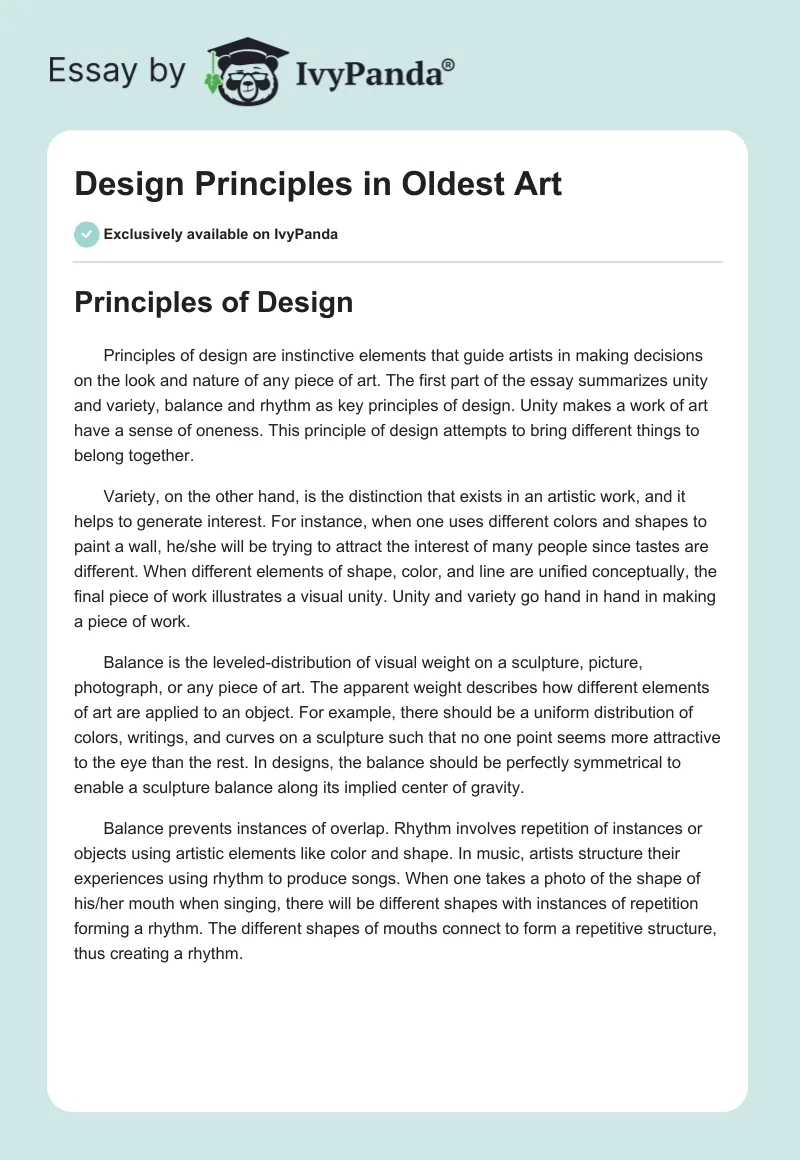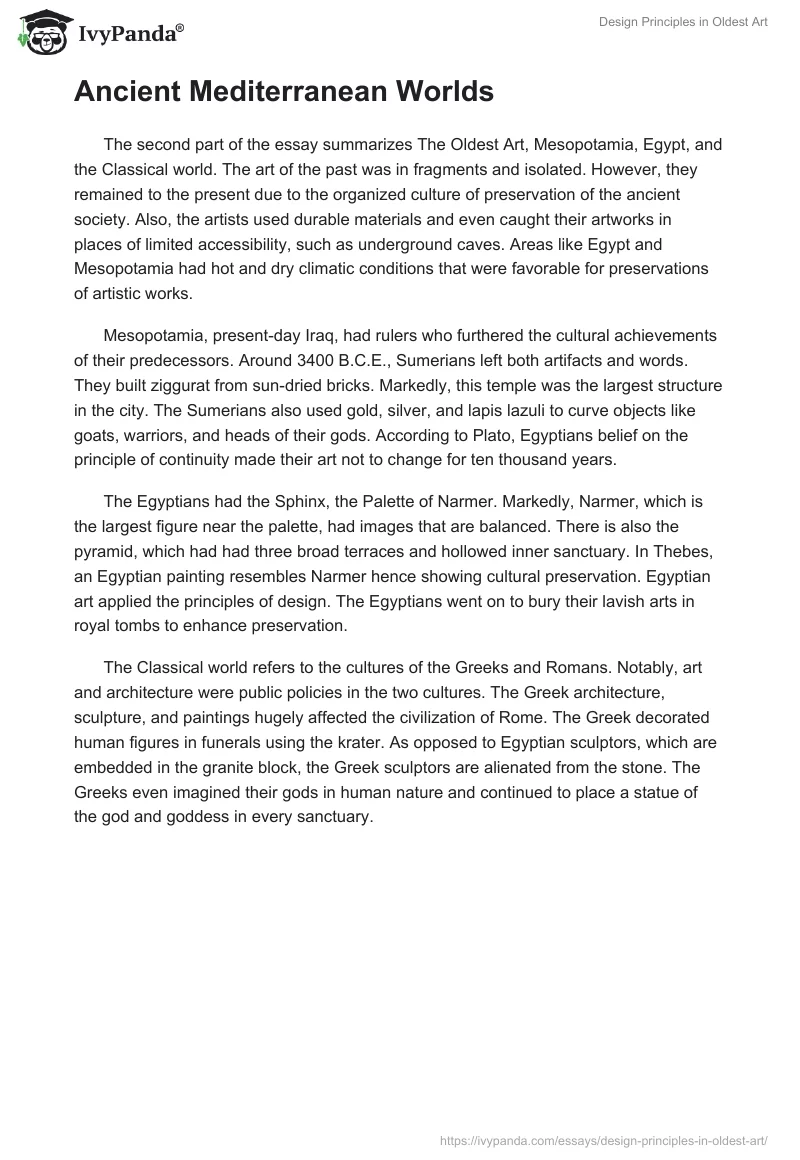Principles of Design
Principles of design are instinctive elements that guide artists in making decisions on the look and nature of any piece of art. The first part of the essay summarizes unity and variety, balance and rhythm as key principles of design. Unity makes a work of art have a sense of oneness. This principle of design attempts to bring different things to belong together.
Variety, on the other hand, is the distinction that exists in an artistic work, and it helps to generate interest. For instance, when one uses different colors and shapes to paint a wall, he/she will be trying to attract the interest of many people since tastes are different. When different elements of shape, color, and line are unified conceptually, the final piece of work illustrates a visual unity. Unity and variety go hand in hand in making a piece of work.
Balance is the leveled-distribution of visual weight on a sculpture, picture, photograph, or any piece of art. The apparent weight describes how different elements of art are applied to an object. For example, there should be a uniform distribution of colors, writings, and curves on a sculpture such that no one point seems more attractive to the eye than the rest. In designs, the balance should be perfectly symmetrical to enable a sculpture balance along its implied center of gravity.
Balance prevents instances of overlap. Rhythm involves repetition of instances or objects using artistic elements like color and shape. In music, artists structure their experiences using rhythm to produce songs. When one takes a photo of the shape of his/her mouth when singing, there will be different shapes with instances of repetition forming a rhythm. The different shapes of mouths connect to form a repetitive structure, thus creating a rhythm.
Ancient Mediterranean Worlds
The second part of the essay summarizes The Oldest Art, Mesopotamia, Egypt, and the Classical world. The art of the past was in fragments and isolated. However, they remained to the present due to the organized culture of preservation of the ancient society. Also, the artists used durable materials and even caught their artworks in places of limited accessibility, such as underground caves. Areas like Egypt and Mesopotamia had hot and dry climatic conditions that were favorable for preservations of artistic works.
Mesopotamia, present-day Iraq, had rulers who furthered the cultural achievements of their predecessors. Around 3400 B.C.E., Sumerians left both artifacts and words. They built ziggurat from sun-dried bricks. Markedly, this temple was the largest structure in the city. The Sumerians also used gold, silver, and lapis lazuli to curve objects like goats, warriors, and heads of their gods. According to Plato, Egyptians belief on the principle of continuity made their art not to change for ten thousand years.
The Egyptians had the Sphinx, the Palette of Narmer. Markedly, Narmer, which is the largest figure near the palette, had images that are balanced. There is also the pyramid, which had had three broad terraces and hollowed inner sanctuary. In Thebes, an Egyptian painting resembles Narmer hence showing cultural preservation. Egyptian art applied the principles of design. The Egyptians went on to bury their lavish arts in royal tombs to enhance preservation.
The Classical world refers to the cultures of the Greeks and Romans. Notably, art and architecture were public policies in the two cultures. The Greek architecture, sculpture, and paintings hugely affected the civilization of Rome. The Greek decorated human figures in funerals using the krater. As opposed to Egyptian sculptors, which are embedded in the granite block, the Greek sculptors are alienated from the stone. The Greeks even imagined their gods in human nature and continued to place a statue of the god and goddess in every sanctuary.


